I discovered the treasures of Imbaw soup during a culinary exploration through Mindanao's vibrant food scene. In a traditional eatery along Davao's coastline, I encountered this pristine seafood dish that exemplifies the region's masterful approach to seafood cookery. The owner, a seasoned chef with decades of experience preparing traditional Mindanaoan cuisine, shared how these prized mangrove clams are sustainably harvested from the nutrient-rich mudflats where rivers meet the sea.
What captivated me was the dish's elegant simplicity: a perfect harmony of fresh clams and aromatic ingredients that showcase the natural flavors of Mindanao's coastal bounty. Through careful study and practice in professional kitchens across the region, I learned the precise technique required to achieve the characteristically clear broth and perfectly tender clams that define an authentic Imbaw soup.
This recipe represents not just a dish, but a celebration of Mindanao's culinary heritage, where pristine ingredients and precise technique come together to create something truly exceptional.
Jump to:
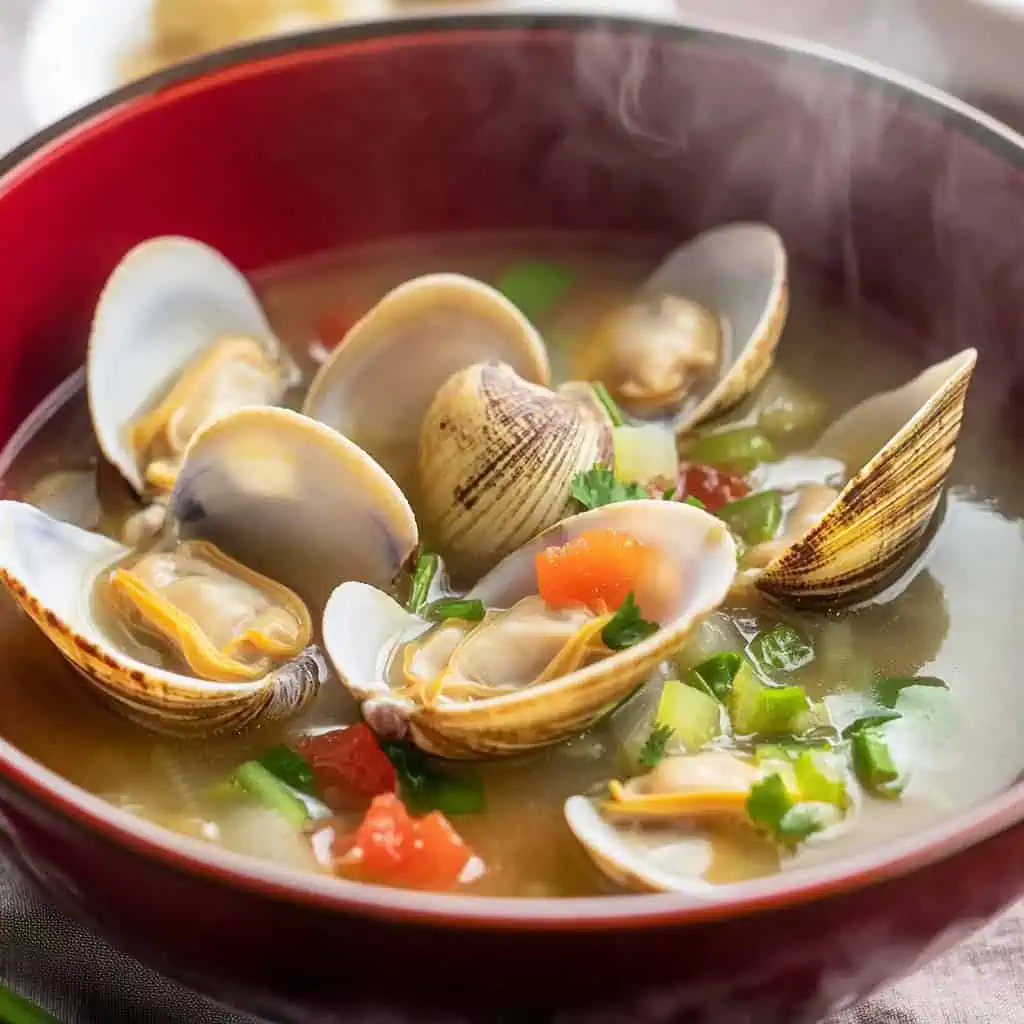
Why You'll Love This Recipe
- Quick & Easy: Ready in just 20 minutes
- Nutritious: Rich in protein, iron, and omega-3 fatty acids
- Authentic: Traditional Davao recipe passed down through generations
- Versatile: Perfect for any weather, especially comforting on rainy days
- Budget-Friendly: Simple ingredients with maximum flavor
- Healing Properties: Traditionally given to nursing mothers for recovery
Ingredients
The ingredients in this Imbaw Soup create a perfect harmony that showcases the delicate flavor of the clams. Lemongrass and ginger provide aromatic warmth without overpowering the star of the dish. Tomatoes add a subtle sweetness and slight acidity that enhances the clams' natural brininess.
Spring onions and regular onions contribute layers of mild flavor that complement rather than compete with the seafood. This thoughtful combination creates a clear, light broth that allows the fresh, sweet taste of the mangrove clams to shine through while providing enough depth to make the soup satisfying.
Each ingredient serves a purpose, working together to create a dish that honors Mindanao's coastal culinary traditions.
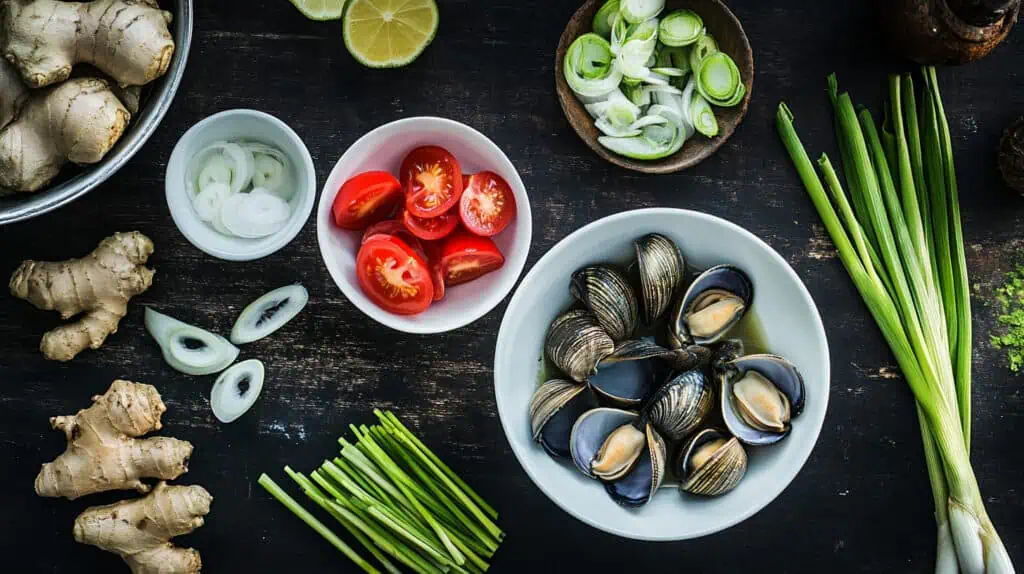
- 1 kg Imbaw or large clams, thoroughly cleaned
- 5 cups water
- 2 ripe tomatoes, halved
- 1 spring onion, sliced
- 2 stalks lemongrass, tied and knotted
- 1 medium onion, chopped
- 1 thumb-sized ginger, peeled and julienned
- Sea salt to taste
Equipment
- Large pot (kaldero) - For cooking the soup and providing enough space for the clams to open properly
- Strainer (salaan) - For thoroughly cleaning the clams of sand and debris
- Sharp knife (kutsilyo) - For precisely cutting vegetables to ensure even cooking
- Cutting board (sangkalan) - For safe preparation of ingredients
- Measuring cups (panukat) - For accurate measurement of water and ingredients
- Ladle (sandok) - For serving the soup without disturbing the clarity of the broth
- Wooden spoon (sandok na kahoy) - For gentle stirring to maintain the clear broth
- Large bowl (mangkok) - For soaking clams to remove sand and impurities

How To Make
- Prepare the clams: Soak your clams in salted water for 30 minutes to remove any sand, then scrub the shells clean and rinse well under running water.
- Prepare the aromatics: While the clams are soaking, cut your tomatoes into halves, slice the spring onions thinly, bruise and tie the lemongrass into knots, chop the onions finely, and cut the peeled ginger into thin strips.
- Create the aromatic broth: Pour 5 cups of water into a large pot and bring it to a full boil over high heat. Once boiling, add your tomatoes, ginger, onion, spring onions, and knotted lemongrass. Cover the pot and let everything simmer over medium heat for 3 minutes – this step infuses the water with all the aromatic flavors.
- Cook the clams: Remove the lid and gently add your cleaned clams to the pot. Season with sea salt to taste. Reduce the heat to low and let the soup simmer for just 1-2 minutes, until the clam shells open up. Watch carefully as overcooked clams can become tough. Remember to discard any clams that don't open during cooking.
- Serve: Your Imbaw soup is ready to serve hot in bowls. You can add some fresh spring onions on top and serve with calamansi or lemon wedges on the side. Best enjoyed with steaming white rice and, if you like some heat, fresh bird's eye chilies.
Note: You'll know the soup is perfect when the broth is clear, not cloudy, and has a delicate seafood aroma with hints of ginger and lemongrass.

Tips from Lola's Kitchen
- Select quality clams: Choose clams that are tightly closed and feel heavy for their size. If a clam is slightly open, tap it gently – it should close. If it doesn't, discard it.
- Safety first: Always discard any clams that don't open during cooking as they may not be safe to eat.
- Cooking technique: Don't overcook the clams as they quickly become tough and rubbery. Remove from heat as soon as most shells have opened.
- Clear broth secret: Minimize stirring to keep the broth crystal clear. Gentle movements preserve the visual appeal of this dish.
- Flavor enhancer: Add a few chili leaves (dahon ng sili) in the last minute of cooking for an authentic Filipino twist.
- Temperature control: Keep the heat low after adding the clams to ensure gentle cooking.
- Serving ritual: In traditional Davao homes, this soup is served immediately after cooking for the best flavor experience.
- The perfect finish: A squeeze of fresh calamansi just before eating brightens all the flavors.
Substitutions
- Clams: If Imbaw (mangrove clams) aren't available, substitute with Manila clams, littleneck clams, or even mussels.
- Lemongrass: Replace with 1 tablespoon of lemon zest or 3-4 kaffir lime leaves.
- Spring onions: Leeks or chives work well as alternatives.
- Fresh tomatoes: In a pinch, use 1 cup of canned diced tomatoes, drained.
- Regular onion: Shallots or red onions provide a milder, sweeter flavor.
- Ginger: Galangal can be used for a more intense, citrusy note.
- Sea salt: Fish sauce (patis) can replace salt for added umami, but use sparingly to maintain the broth's clarity.
Troubleshooting
- Cloudy broth: Too much stirring or inadequately cleaned clams are usually the culprits. Next time, soak clams longer and handle the soup more gently.
- Tough, rubbery clams: You've overcooked them. Remember that clams continue cooking slightly even after removed from heat, so err on the side of less cooking time.
- Sandy soup: The clams weren't cleaned thoroughly. Increase soaking time in salted water before cooking and rinse multiple times.
- Bland taste: Add more ginger and ensure proper salt seasoning. The soup should be lightly salted to complement the natural sweetness of the clams.
- Too salty: Add a little more water or an extra tomato to balance the flavors.
- Clams not opening: They may not be fresh. Always use the freshest clams possible and discard any that don't open during cooking.
- Fishy smell: This indicates the clams aren't fresh. Quality clams should smell fresh like the sea, not fishy.
Storage & Reheating
- Immediate consumption: For best flavor and texture, Imbaw soup should be consumed immediately after cooking.
- Short-term storage: If necessary, store in an airtight container in the refrigerator for up to 2 days.
- Not freezer-friendly: Freezing is not recommended as the texture of the clams deteriorates significantly.
- Reheating method: Gently warm over low heat just until hot. Do not boil aggressively as this will toughen the clams.
- Safety note: Only reheat once and ensure the soup reaches a proper temperature to prevent foodborne illness.
- Clam removal: If planning to store, consider removing the clams from their shells and storing separately from the broth.
- Freshness indicator: If the soup develops an off smell or the clams become mushy, discard immediately.
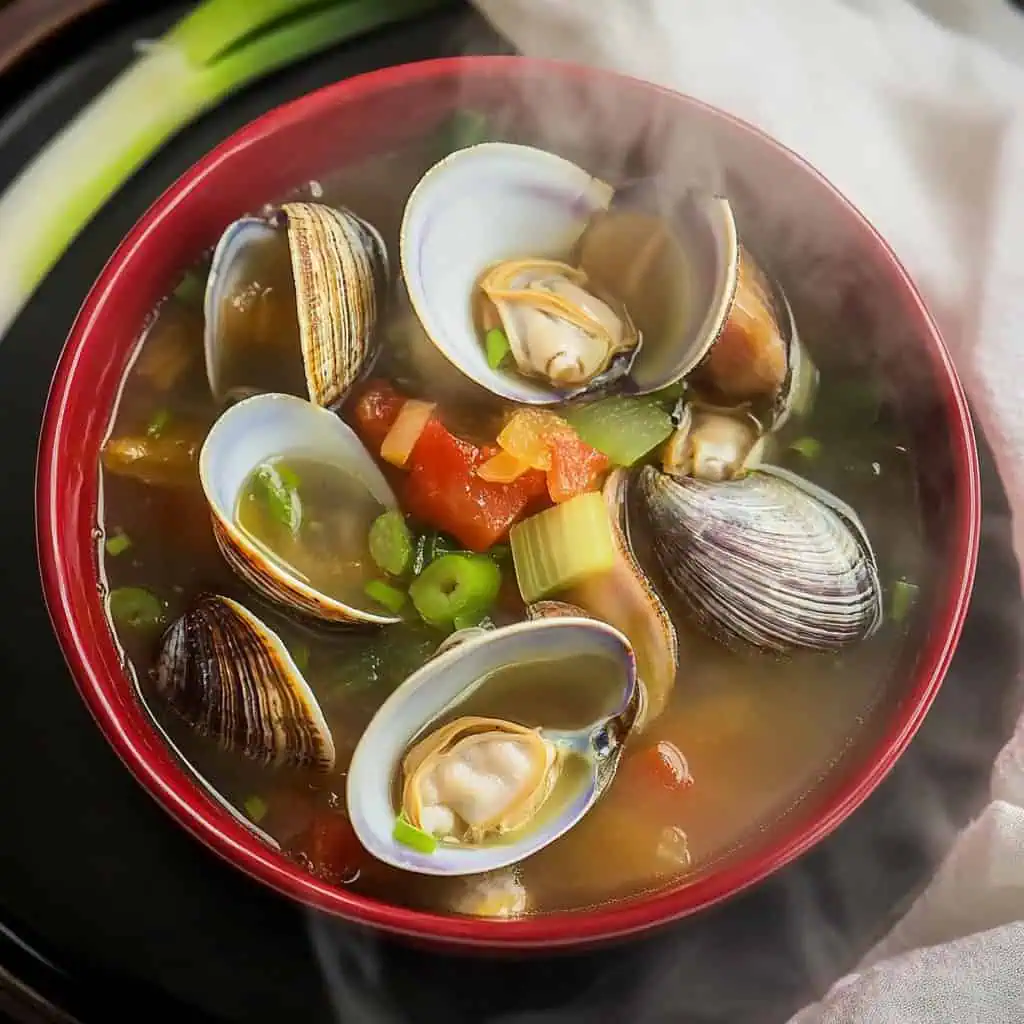
FAQ
Is Imbaw soup safe during pregnancy?
Yes, when properly cooked. Ensure clams are fresh and thoroughly cleaned. The soup is actually traditionally recommended for pregnant and nursing mothers in Filipino culture.
How do I know if Imbaw clams are fresh?
Fresh Imbaw shells should be closed or close when tapped. They should smell fresh like the sea, not fishy. The shells should feel heavy for their size, indicating they're full of meat.
Can I make this soup in advance for a gathering?
This soup is best served immediately after cooking. The quality and texture of the clams decrease significantly when stored and reheated.
How do I clean Imbaw properly to avoid a sandy soup?
Soak in cold salted water for at least 30 minutes (longer is better), scrub shells if needed, then rinse thoroughly under running water. Repeat the soaking process if the clams are particularly sandy.
Why is my soup not as flavorful as expected?
The quality of clams makes a huge difference. Ensure they're fresh and that you've used enough aromatics. Also, proper salt levels help bring out the natural flavors.
What makes the soup cloudy instead of clear?
Excessive stirring, boiling too vigorously, or inadequately cleaned clams can make the soup cloudy. Use gentle movements and ensure clams are thoroughly cleaned.
Is this recipe keto-friendly?
Yes, it's naturally low in carbohydrates and suitable for keto diets when served without rice.
Can I add other seafood to this soup?
Yes, shrimp or white fish can be added, but adjust cooking times accordingly as these cook even faster than clams. Add them after the clams have begun to open.
What makes Davao Imbaw soup different from other clam soups?
The specific aromatics used (particularly lemongrass and ginger) and the technique of minimal intervention to maintain a clear broth are distinctive to this Mindanaoan recipe.
How can I make this soup more substantial for a main dish?
While traditionally served simple, you can add leafy greens like kangkong (water spinach) or pechay (bok choy) in the last minute of cooking for added nutrition.
Related
Looking for other recipes like this? Try these:
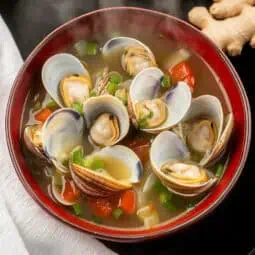
Authentic Davao Imbaw Soup (Clam Shell Soup)
Equipment
- Large pot (kaldero) For cooking the soup
- Strainer [Salaan] For cleaning the clams
- Sharp knife (kutsilyo) For cutting vegetables
- Cutting board (Sangkalan) For preparation
- Measuring cups (panukat) For accurate measurements
- Ladle - sandok For serving
- Wooden spoon (sandok na kahoy) For gentle stirring
- Large bowl (Mangkok) For soaking clams
Ingredients
- 1 kg Imbaw or large clams thoroughly cleaned
- 5 cups water Tubig
- 2 ripe tomatoes Kamatis, halved
- 1 spring onion Dahon ng Sibuyas, sliced
- 2 stalks lemongrass Tanglad, tied and knotted
- 1 medium onion Sibuyas, chopped
- 1 thumb-sized ginger Luya, peeled and julienned
- Sea salt Asin to taste
Instructions
- First, soak your clams in salted water for 30 minutes to remove any sand, then scrub the shells clean and rinse well under running water. While the clams are soaking, cut your tomatoes into halves, slice the spring onions thinly, bruise and tie the lemongrass into knots, chop the onions finely, and cut the peeled ginger into thin strips.
- Pour 5 cups of water into a large pot and bring it to a full boil over high heat. Once boiling, add your tomatoes, ginger, onion, spring onions, and knotted lemongrass. Cover the pot and let everything simmer over medium heat for 3 minutes – this step infuses the water with all the aromatic flavors.
- Remove the lid and gently add your cleaned clams to the pot. Season with sea salt to taste. Reduce the heat to low and let the soup simmer for just 1-2 minutes, until the clam shells open up. Watch carefully as overcooked clams can become tough. Remember to discard any clams that don't open during cooking.
- That's it – your Imbaw soup is ready to serve hot in bowls. You can add some fresh spring onions on top and serve with calamansi or lemon wedges on the side. Best enjoyed with steaming white rice and, if you like some heat, fresh bird's eye chilies.
- Note: You'll know the soup is perfect when the broth is clear, not cloudy, and has a delicate seafood aroma with hints of ginger and lemongrass.
Tips from Lola's Kitchen
- Choose clams that are tightly closed and feel heavy for their size
- If a clam doesn't open during cooking, discard it
- Don't overcook the clams as they can become tough
- The broth should be clear, not cloudy
- Add chili leaves (dahon ng sili) for extra Filipino flavor
- Use minimal stirring to keep the broth clear
Nutrition
The Story Behind Imbaw Soup
Deep in the mangrove forests of Mindanao, where the rivers meet the sea, lies the origin of one of Davao's most cherished culinary treasures – Imbaw soup. This pristine seafood dish tells a story of resourcefulness, tradition, and the profound connection between coastal communities and their environment.
Known locally as "kabibe" or "imbao," these mangrove clams have been a staple of Mindanaoan coastal cuisine for generations. Indigenous communities have long recognized these clams not just as a source of sustenance, but as nature's gift to nursing mothers. Local healers and midwives have traditionally prescribed Imbaw soup to new mothers, believing in its power to enhance milk production and speed postpartum recovery.
The harvesting of Imbaw is an art form in itself, passed down through generations of coastal families. Expert gatherers, known as "mangangapa," wade through knee-deep mud during low tide, using their trained feet to feel for the distinctive shells buried beneath. This sustainable harvesting method, practiced for centuries, ensures the clams' population remains abundant for future generations.
What makes Imbaw soup truly special is its representation of Filipino culinary philosophy – the art of enhancing, rather than masking, natural flavors. The clear broth, infused with aromatic ginger, lemongrass, and tomatoes, serves as a canvas that allows the sweet, briny essence of the clams to shine through. This thoughtful combination of ingredients reflects the sophisticated understanding of flavor harmony that characterizes Mindanaoan cuisine.
Today, as farm-to-table and sustainable dining gain global recognition, Imbaw soup stands as a testament to these principles that coastal Filipino communities have practiced for centuries. In Davao's bustling markets and humble seaside eateries, this dish continues to tell the story of a region's deep connection to its waters, its respect for ingredients, and its commitment to preserving culinary traditions.
Whether enjoyed in a local carinderia or prepared in modern Filipino homes, each bowl of Imbaw soup carries within it the essence of Mindanao's maritime heritage. It's more than just a soup – it's a living tradition that continues to nourish and connect generations of Filipino families, one steaming bowl at a time.







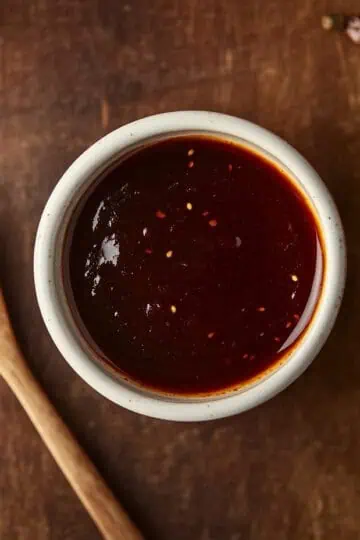

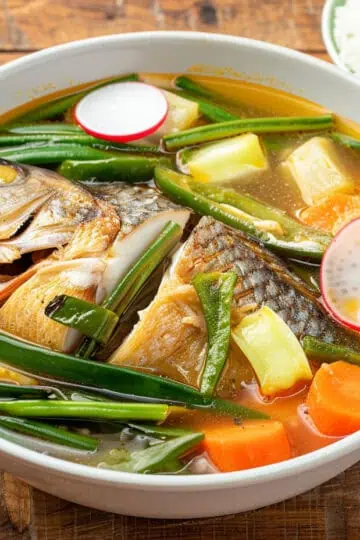
Comments
No Comments